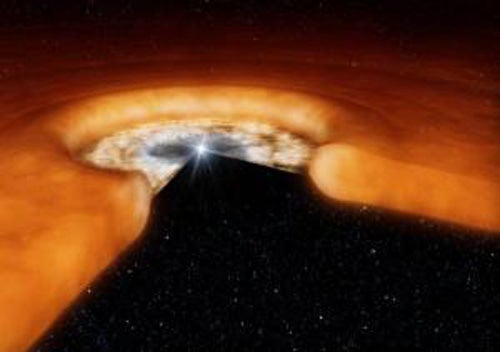New high-resolution observations with the Very Large Telescope (VLT) Interferometer of the European Southern Observatory in Chile reveal gas in-fall and outflow processes in the direct environment of six young stars.
Because earlier investigations could not resolve the gas distribution close to the star, experts still debate the origin of these stars’ gas emission. An international team of astronomers, led by Stefan Kraus from the Max Planck Institute for Radio Astronomy in Bonn, Germany, and Eric Tatulli from the Observatoire de Grenoble in France, used the AMBER instrument to measure the inner disk regions’ atomic and molecular geometry. Surprisingly, they found that the gas emission could trace very distinct physical mechanisms. These processes include in-fall of material onto the star as well as gas, which is ejected from the system, likely in a disk wind. The results are published in this week’s issue of Astronomy & Astrophysics.
Stefan Kraus and Eric Tatulli used the unique capability of the VLT near-infrared interferometer, coupled with spectroscopy, to probe the gaseous environment of a specific type of young star called Herbig Ae/Be stars. These young stars with an intermediate mass approximately 2 to 10 solar masses which are still contracting and often show strong line emission.
In recent years, astronomers have studied young stars with near-infrared interferometers. These instruments allow scientists to study a star’s close environment with high spatial resolution. “But so far, near-infrared interferometry has been mostly used to probe the dust that closely surrounds young stars,” says Eric Tatulli. “However, dust is only one percent of the total mass of the disks, while gas is their main component and may define the final architecture of forming planetary systems.”
High-resolution observations of emission spectral lines are required to trace this gaseous component. Various processes have been proposed as the source of emission lines. For example, the emission lines might come from an accreting gaseous inner disk or might be due to magnetospheric accretion processes or a stellar wind. Most of these processes take place close to the star (less than 1 AU, or the distance between Earth and the Sun) and are therefore not accessible with direct imaging facilities.










